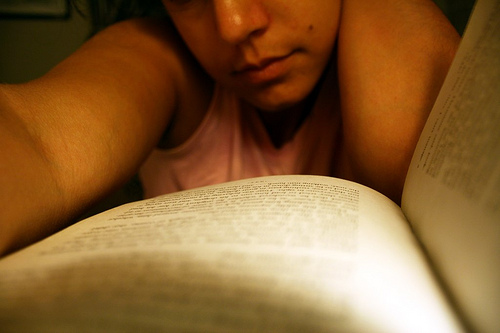Shireen Jeejeebhoy writes about her journey back to the love of reading. You can read the first post in this series here.
For most of my post-brain injury years, I’ve roared ahead at top speed trying to get my life back as quickly as possible. I worked hard to regain skills, the necessary ones and the ones which, are critical-to-me. I strived to become financially independant.
Then last year happened. It was tough. I learned you cannot control other people. Your health care and recovery are by necessity dependent on others, and when they don’t listen, you can either scream and stomp off, go with the flow and not heal much, or keep pushing. (And pushing and pushing while your PTSD hits the stratosphere as parts of your recovery slow to a crawl.)

At some point, I stopped driving hard. It was almost a relief to move into the frozen lane. My neurodoc was probably relieved too.
That’s when reading books and long form articles halted altogether. That’s why my neurodoc said we are starting from zero with respect to my reading. Anything I do is an improvement, no matter how small.
And so we begin reading rehab with a few possible strategies.
After my neurodoc saw me read a portion of a Wall Street Journal article, he said the first thing I needed to do was relax and bring my anxiety under control. We discussed strategies I’m familiar with, but in a different way — with the encouragement from someone being alongside me – not as an expert telling me what to do.

First: I used my Mind Alive audiovisual entrainment device’s 15-minute alpha session to relax. Anxiety interferes with cognition and makes it harder to read. The key is to get rid of the anxiety, which will take awhile.
Next: I covered off the text, and used my fingers or a ruler to slow my reading down. Instead of using the Evelyn Wood method to speed up my reading, I used it to try and slow down so that my eyes worked at my processing and integration speed. The only thing is, I can’t use my fingers or ruler on an eReader or iDevice, so we will need to come up with a similar strategy for screens.
And finally: do a Toronto Sun-style summary of what I’d read. Let me tell you, when he had me summarize what I’d read to him as if it were for Toronto’s daily tabloid, it changed my task from being a university-level assignment to something do-able.
My neurodoc insisted I take home the WSJ article to trigger the things we discussed and to remind me I’m not alone.
He reminded me that the strategies we discussed this week are the barest beginning. I have a partner and someone doing the thinking, not as an expert in reading, but as an expert in listening and in me so as to come up with approaches to help me. Thank God for that.
You can read the full versions of Shireen’s posts on her blog HERE.
Filed under: For the Love of Reading Tagged: For the love of reading, Reading, rehab, Shireen Jeejeebhoy
![]()
Source: BIST Blog




